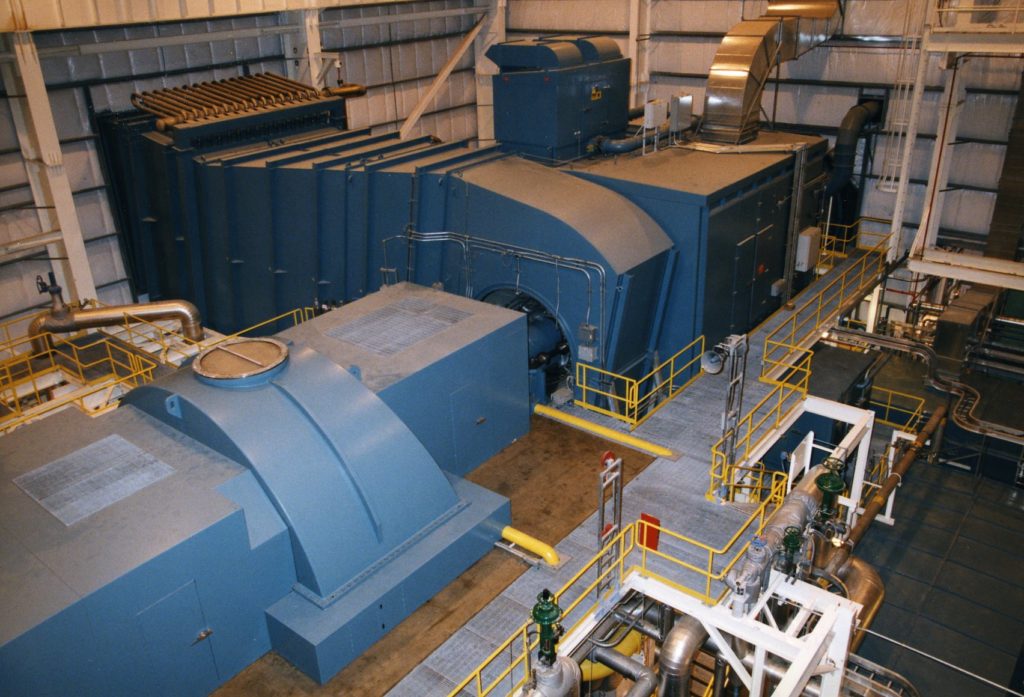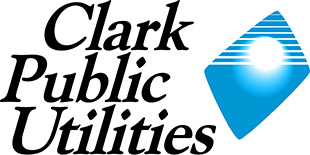Planning Today to Meet Tomorrow’s Needs
Clark Public Utilities is committed to delivering its customers the most reliable and affordable power possible while staying compliant with federal and state laws, being good stewards of the environment, and remaining flexible in an era of rapidly evolving technology and marketplace realities.
The Integrated Resource Plan (IRP) helps inform those goals, and outlines what resources the utility needs to meet forecasted energy demands in the most efficient, cost-effective way possible.

About Our IRP
Under the Energy Independence Act 19.280 RCW, all electric utilities with more than 25,000 customers must develop and update resource plans or integrated resource plans and make them publically available every two years. The IRP is updated in-full every four years, with progress reporting and updating of the most current version every two years. Utilities must also submit plans and updates to the Washington State Department of Commerce, who then forwards aggregated reports to the state legislature.
Clark Public Utilities is one of 18 utilities in the state that are subject to this law. Those utilities provide 80 percent of the power sold to retail customers in the state.
Clark Public Utilities provides electricity service to more than 219,000 customers throughout Clark County, and water service to about 37,000 homes and businesses in unincorporated areas.
While physical resources like hydroelectric dams and power plants provide the actual electricity consumed in Clark County, Clark Public Utilities also uses energy conservation programs as an energy resource.
Simply put: when we conserve electricity locally it reduces the need for additional physical resources and allows the utility to serve more customers and businesses without the need to build and maintain new electric generation capability. Often times energy conservation programs are the most cost effective resource which is why Clark Public Utilities has offered robust conservation programs for the last 40 years.
Clark Public Utilities Fuel Mix
Clark Public Utilities procures electricity from an array of resources.
Under the fuel mix disclosure law, RCW 19.29A, Washington utilities are required to report the sources of power used to serve their customers. The Department of Commerce collects and publishes this data annually. The most recent published data is for the year 2021. For more information visit the Washington Department of Commerce’s fuel mix reporting page.
- 45.69 percent is hydropower purchased from the Bonneville Power Administration
- 34.29 percent is produced at Clark Public Utilities River Road natural gas-fired generating plant
- 5.85 percent is produced by nuclear electricity (BPA purchases the output of the Columbia Generating Station located in Richland Washington)
- 4.15 percent is wind power generated at the Combine Hills II wind farm near Milton Freewater, OR
- 10.02 percent is market purchased power from non-specified sources
 Important Considerations and Requirements
Important Considerations and Requirements
Resource planning is one of our most important tasks, as the cost of our power supply requires nearly 65 percent of the electric utility’s budget. Such a large component of our budget requires careful advanced planning to secure the best prices and the most appropriate fuel mix to meet customer needs, with emphasis on sustainability, affordability and reliability.
Our area is served largely by clean and renewable hydropower. Much of our supply comes from the Bonneville Power Administration, a federal agency that markets hydroelectricity created by dams on the Columbia and Snake rivers. About a third of our power comes from the River Road Generating Plant (RRGP), a combined-cycle combustion turbine fueled by natural gas. Located in Vancouver, it was completed in 1997. RRGP will continue serving load during most periods and being displaced when it is economic to do so. Looking forward, the addition of the RRGP Flexibility product in May 2024, will allow Clark Public Utilities to ramp the plant down for short periods of time which will increasingly lower carbon emissions. The remainder of our power supply is produced by a combination of wind, nuclear and market purchases from non-specified sources.
Among other requirements, the IRP must include:
- A range of 20-year load forecasts;
- An assessment of commercially available conservation and energy efficient resources;
- An assessment of commercially available, utility scale generating technologies, including a “buy versus build” comparison;
- A comparison between renewable and nonrenewable resources;
- An assessment of methods, commercially available technologies, or facilities for integrating renewable resources;
- An assessment of a plan to implement the least expensive resources to meet demand;
- A short-term plan to identify actions that are consistent with the IRP.
Issues on the local, state, and national levels make long-term planning a challenge. For example, the Bonneville Power Administration, has existing long term, cost based, 20-year purchase power agreements that expire in 2028. The dominant part of our power supply is this cost based, renewable, reliable, dependable hydropower.
Clark Public Utilities’ 2020 IRP met the requirements of the Energy Independence Act (EIA) and the Clean Energy Transformation Act (CETA), including, for the first time, a Clean Energy Action Plan (CEAP). In addition, Clark Public Utilities filed its first Clean Energy Implementation Plan (CEIP) with the Washington Department of Commerce on December 29, 2021. The projected resource portfolios included in the 2020 IRP Update, for 2022, are consistent with the CEIP.
Delivery and Other Important Dates
- The 2020 IRP was submitted to the Washington Department of Commerce in September 2020
- A progress report on the 2020 IRP, the 2020 IRP Update, was submitted in September 2022
- The public comment period on the draft IRP Update was open July 20, 2022 – August 19, 2022
- The Final 2020 IRP Update was adopted by the board of commissioners on August 23, 2022
- The Final 2020 IRP Update is posted below
- The next full IRP will be developed and submitted in 2024
Current Planning Documents
2020 Integrated Resource Plan Update – posted August 26, 2022
2020 Clark Public Utilities Integrated Resource Plan – Adopted and Approved August 4, 2020
2023 Clark Public Utilities Conservation Potential Assessment
2023 Clark Public Utilities Demand Response Potential Assessment
Historical Working Documents
Integrated resource planning is an ever evolving process. The archives in this section reflect Clark Public Utilities’ long history of resource planning.
Resource Adequacy Metrics Determination
Electrification of Clark County
Distributed Energy Resources & Generation
Microgrids
A Functional Replacement of Combined Cycle Combustion Turbine using Renewable Energy and Batteries
Integrated Resource Plan Feedback
Clark Public Utilities invites its customer-owners to participate in the conversation and inform the IRP through development and updates/progress report milestones by submitting comments and questions during the state-mandated public comment period and beyond. Clark Public Utilities customers are always encouraged to participate in the conversation around the IRP and any other utility business by attending regularly scheduled commission meetings.
- Public comments on the 2020 IRP Update were open and accepted during the period of July 20, 2022 through August 19, 2022
- To view FAQs and submitted comments on the 2020 IRP Update (summer 2022) click here
- To view FAQs and previously submitted comments on the 2020 IRP (summer 2020) click here
Customers are also welcome to contact the utility 24 hours a day, 7 days a week by calling 360-992-3000 or emailing [email protected].
This webpage will continue to be updated to ensure customer-owners are up to date on the latest news regarding the IRP development process. It was also designed to be a clearinghouse for all documents, public comments and feedback related to the plan and other relevant ongoing planning and compliance activities.
We Want To Hear From You!
The public comment period for the 2020 IRP Update is now closed.
Members of the public that wish to make comments around the IRP or any other subject are always welcome to attend a public meeting of the Board of Commissioners at any time.

